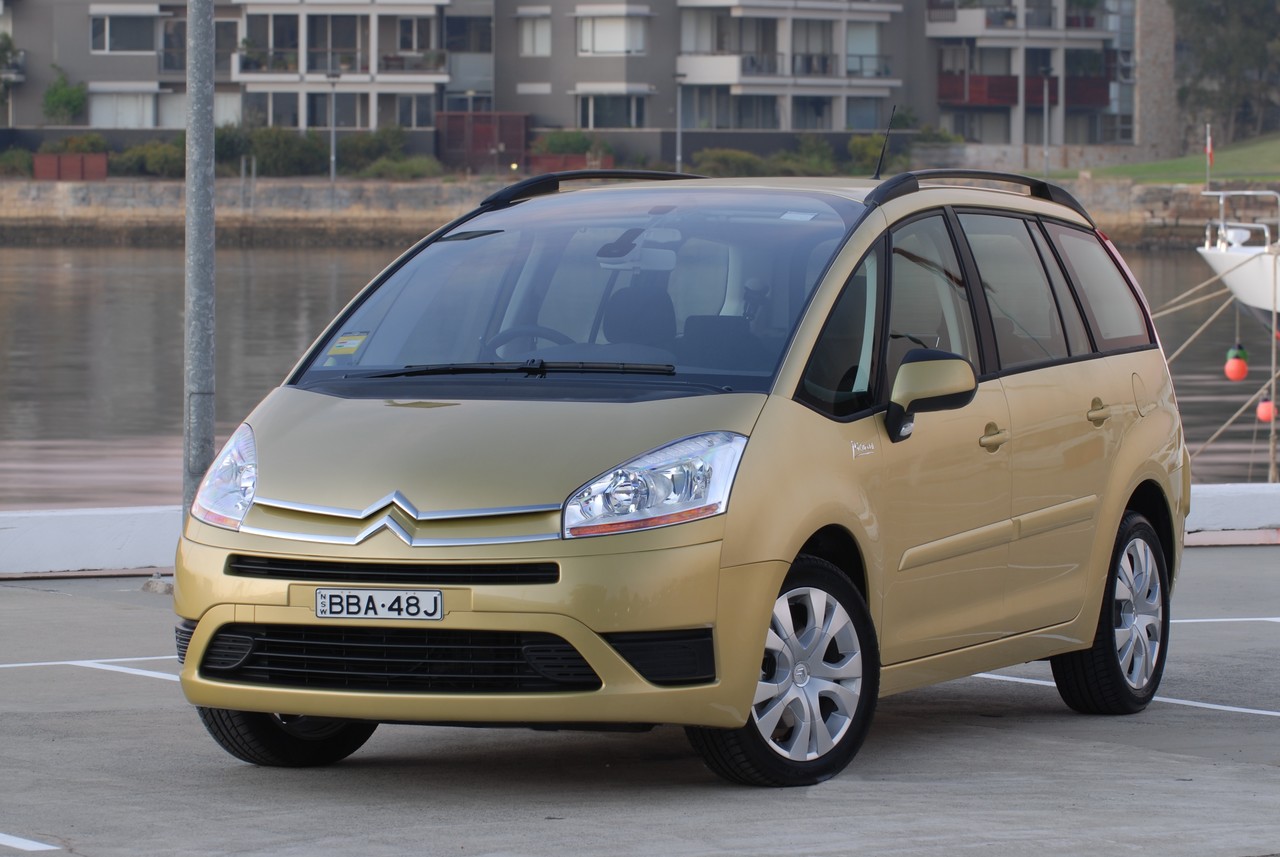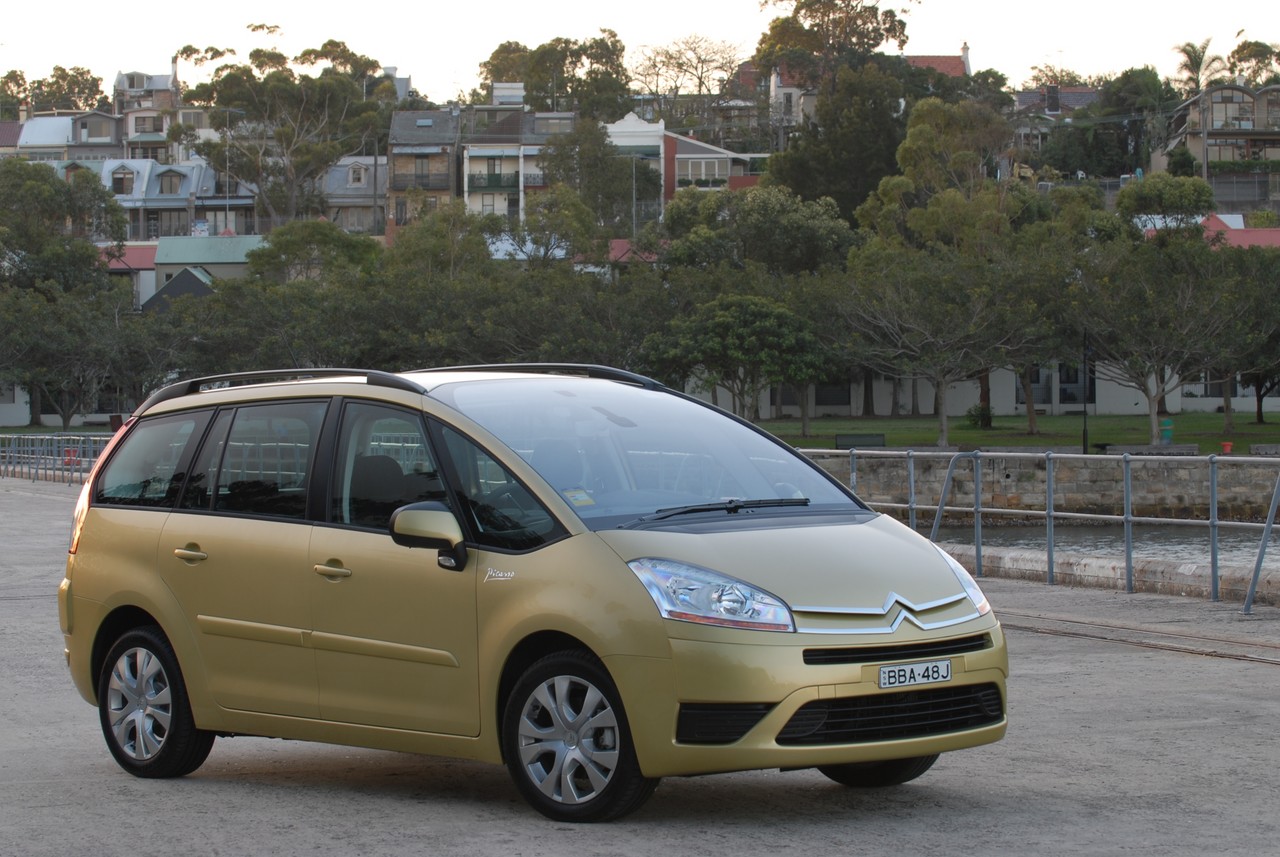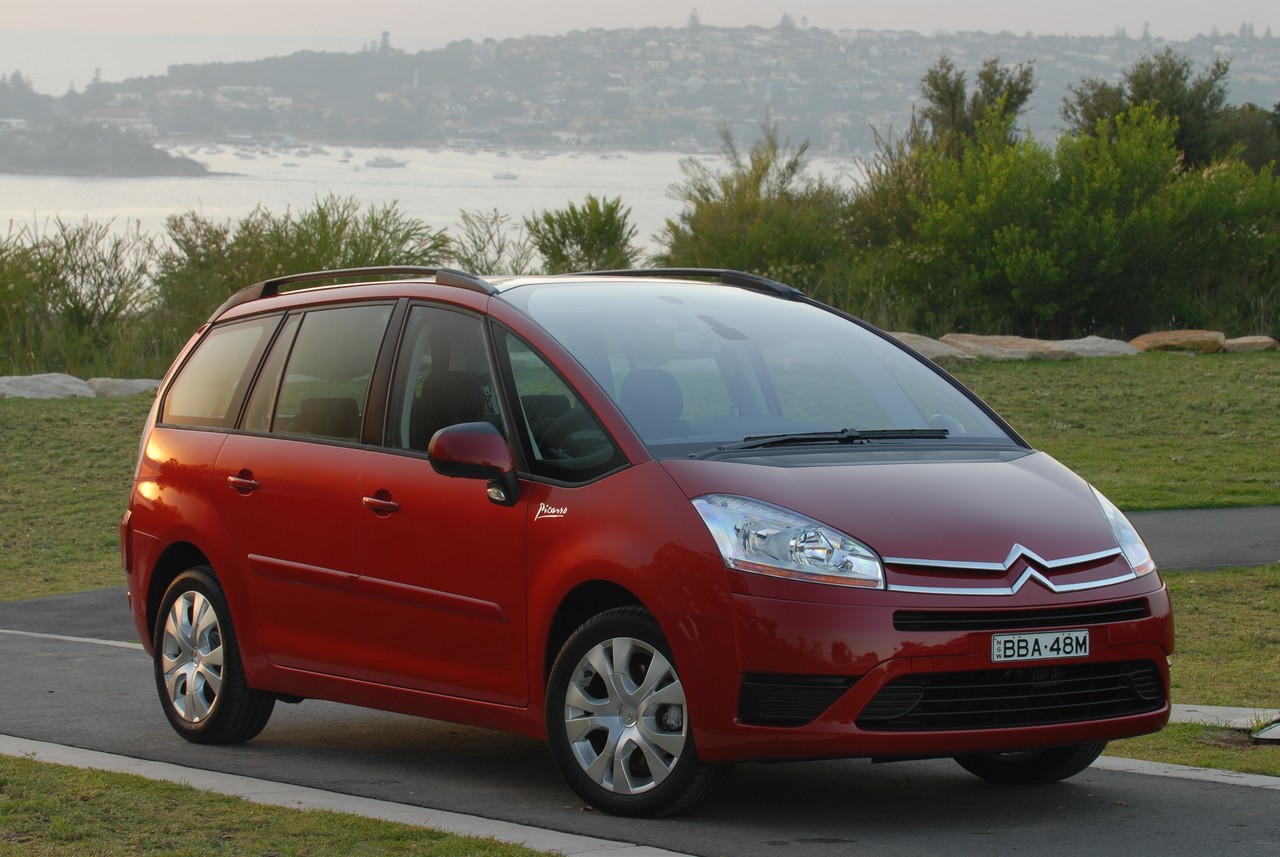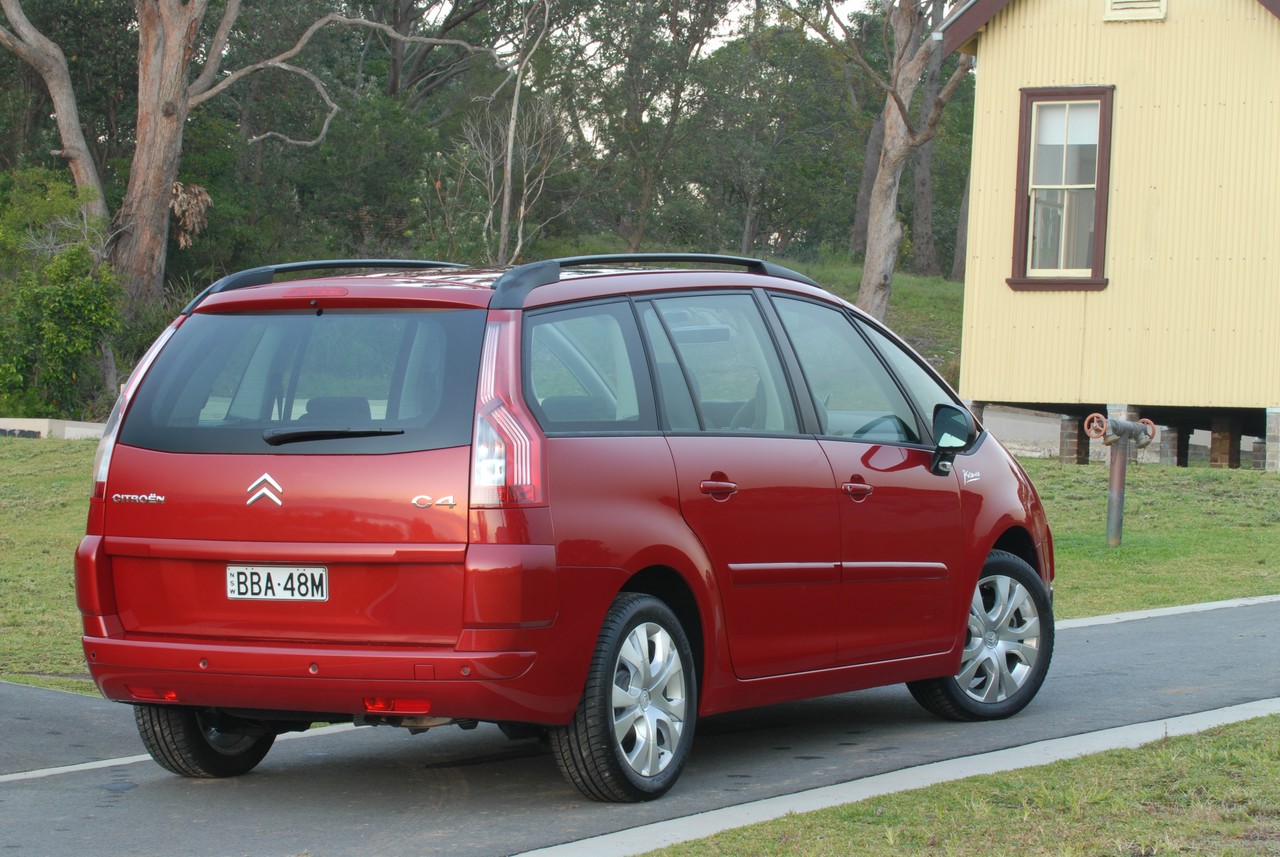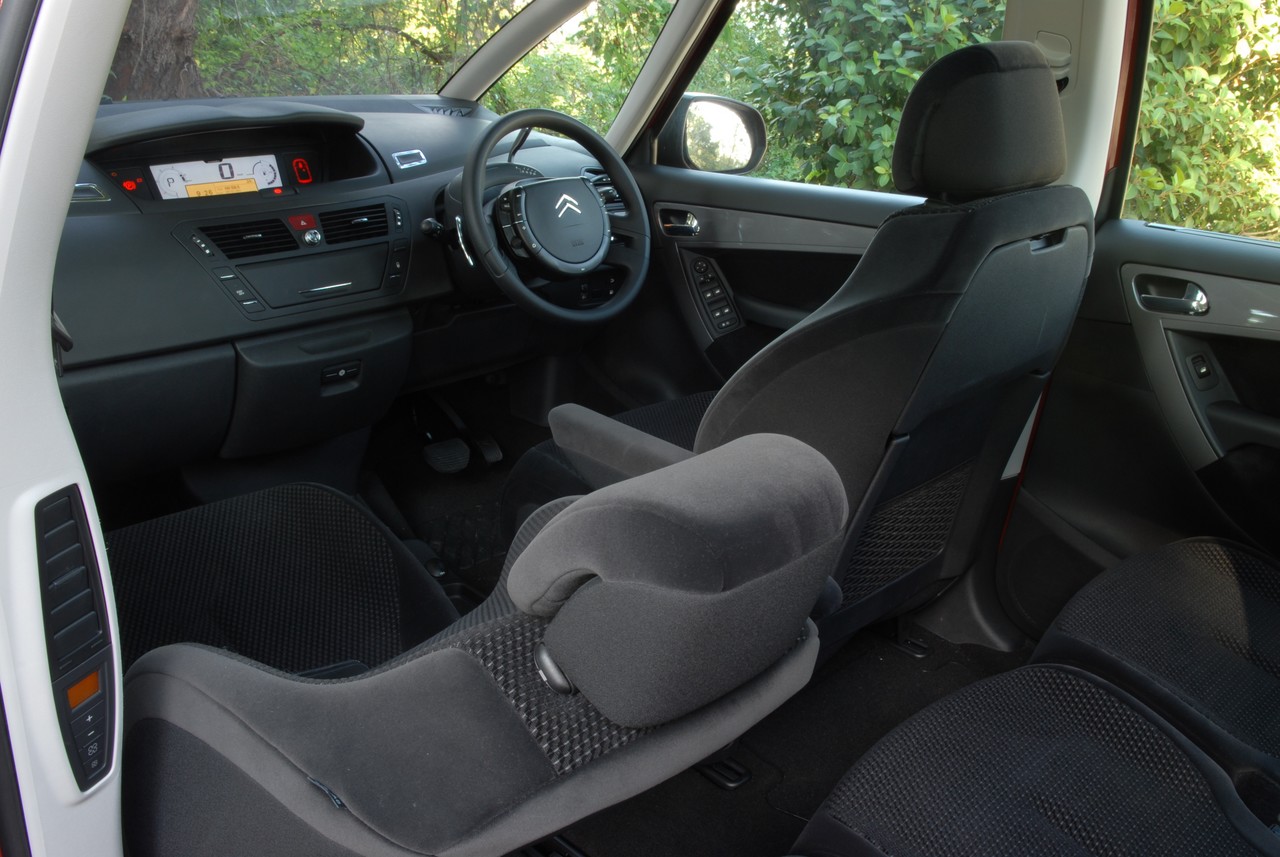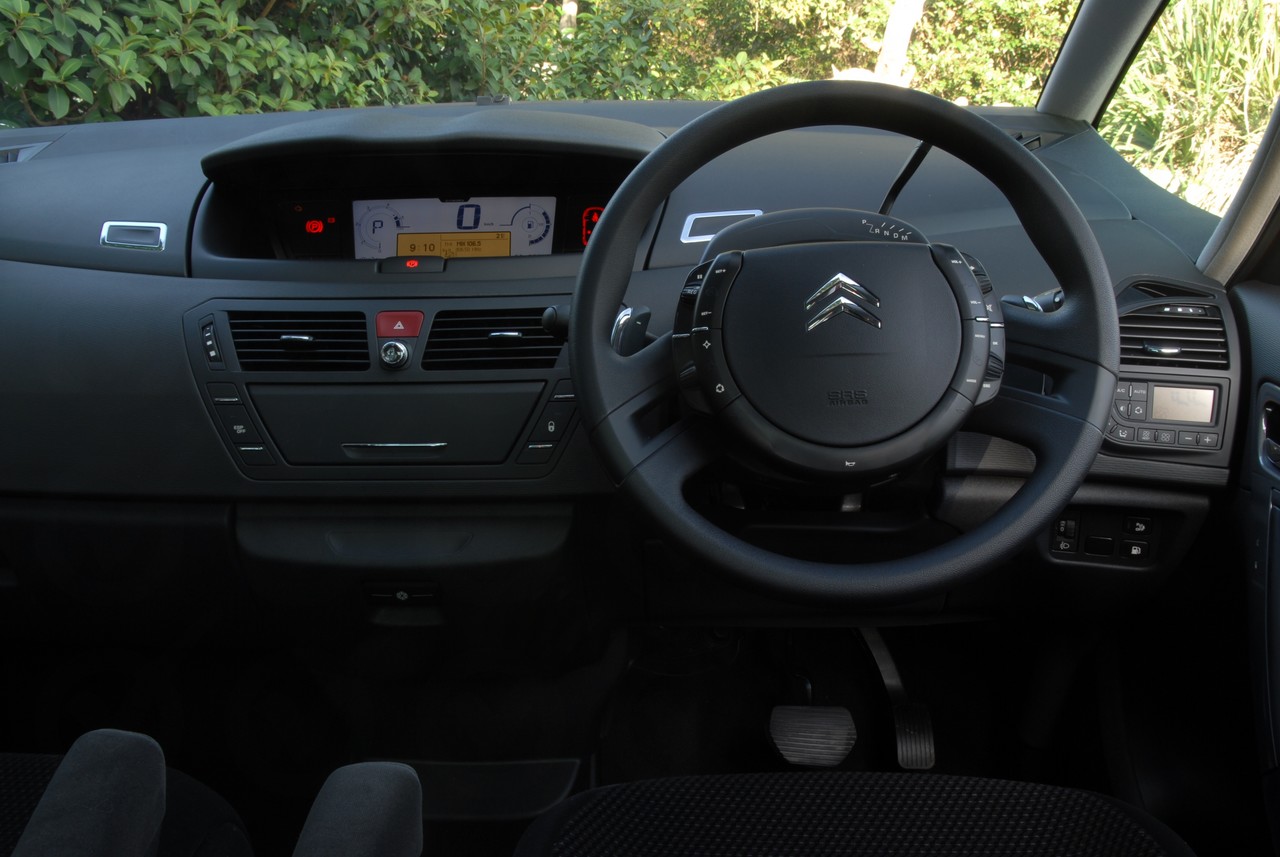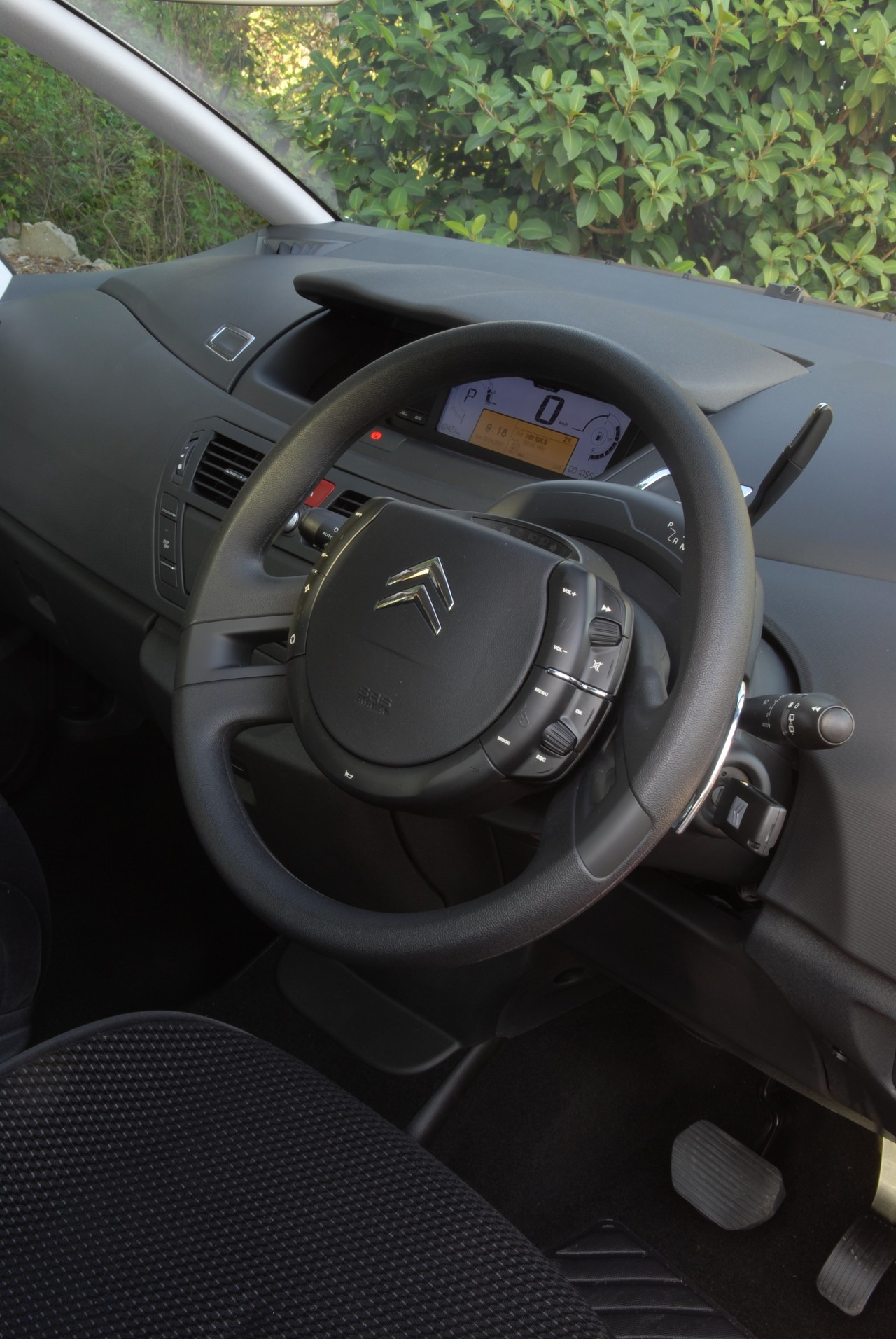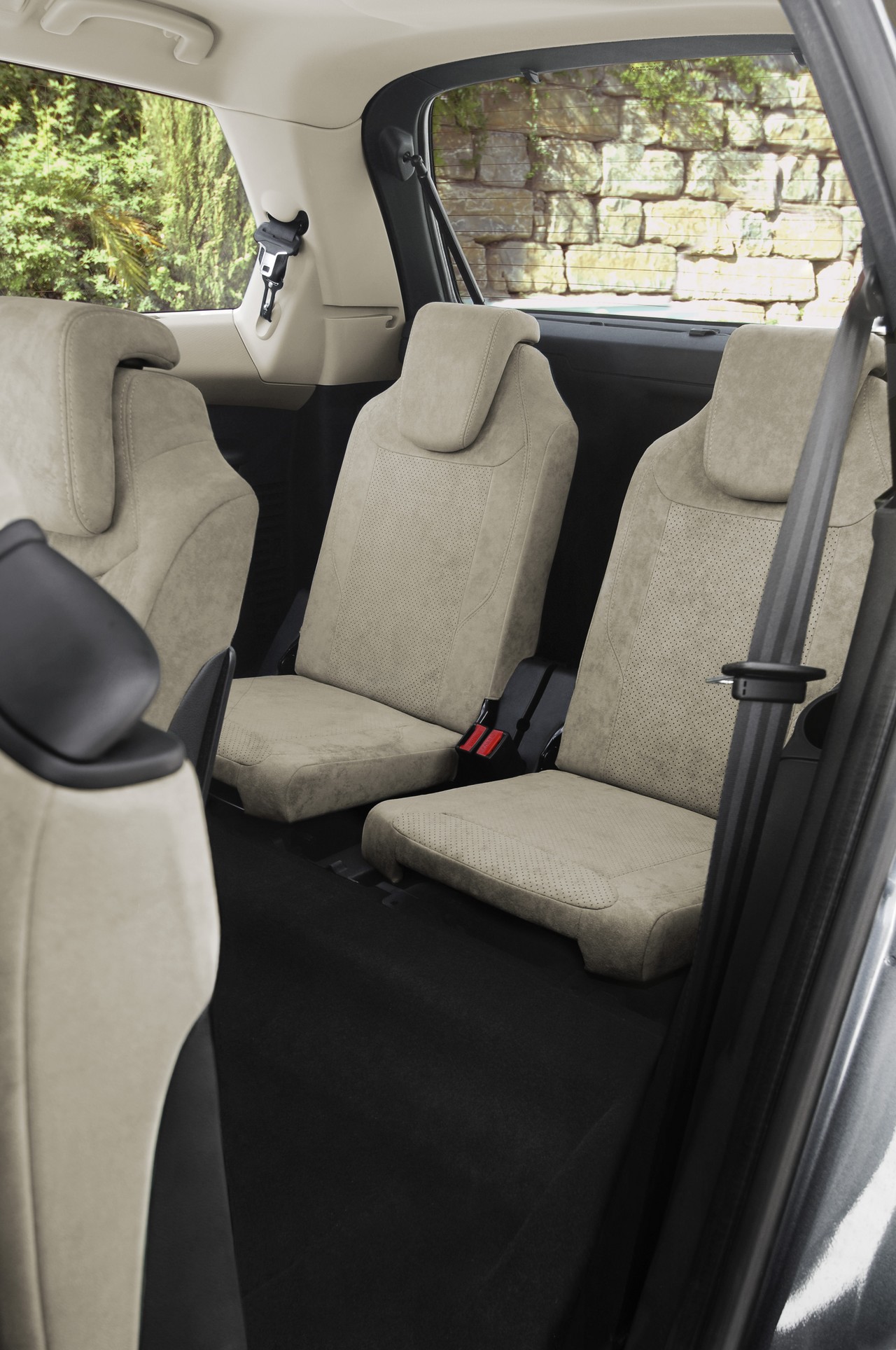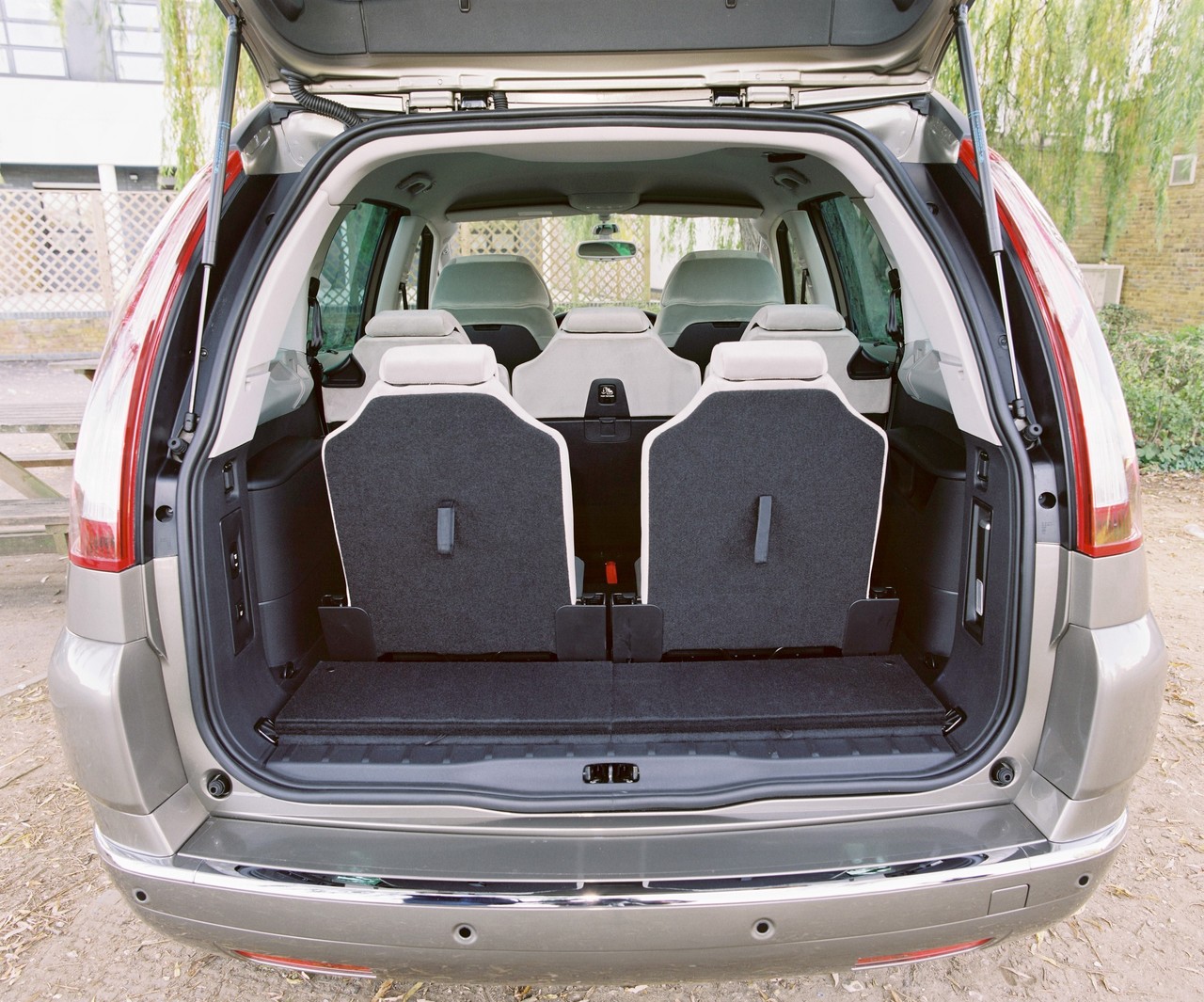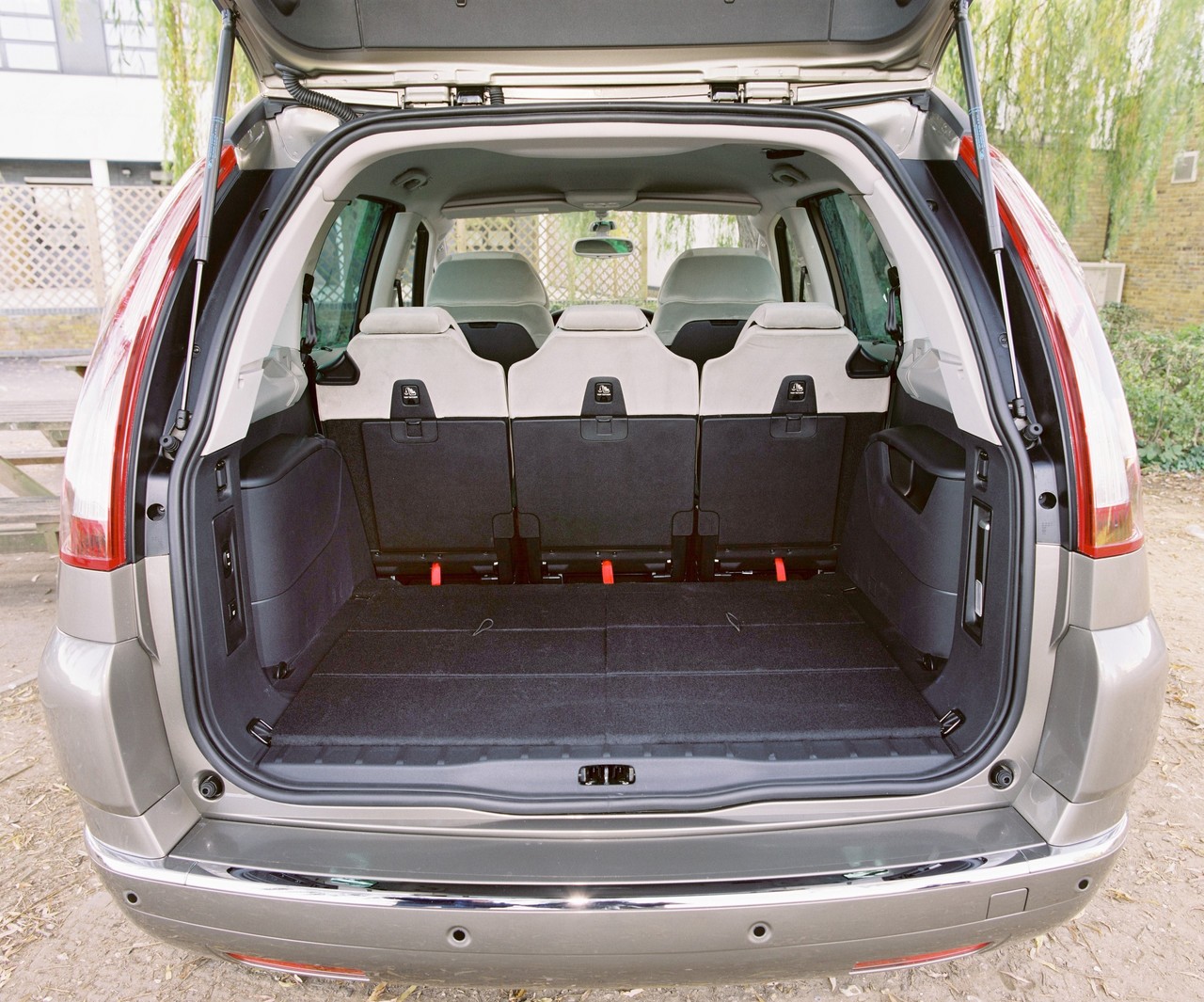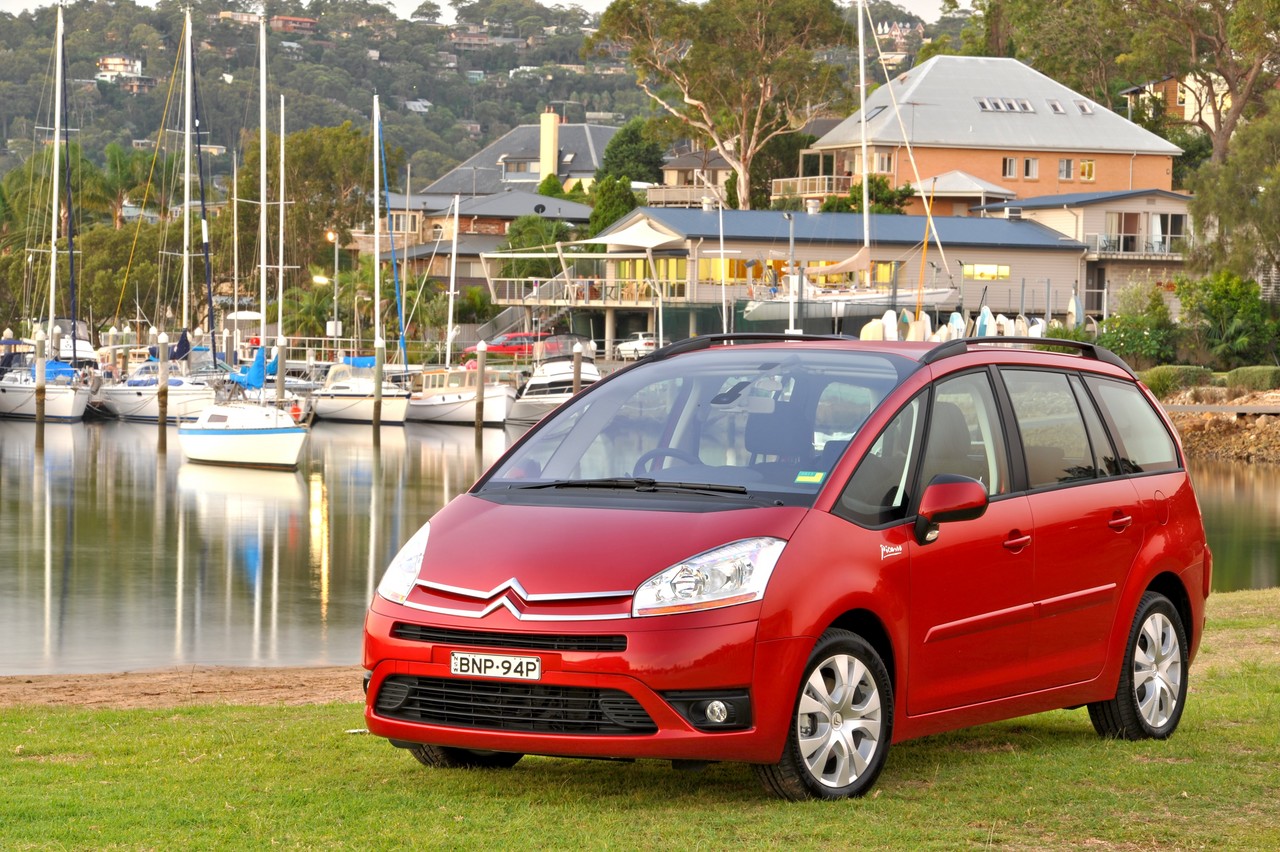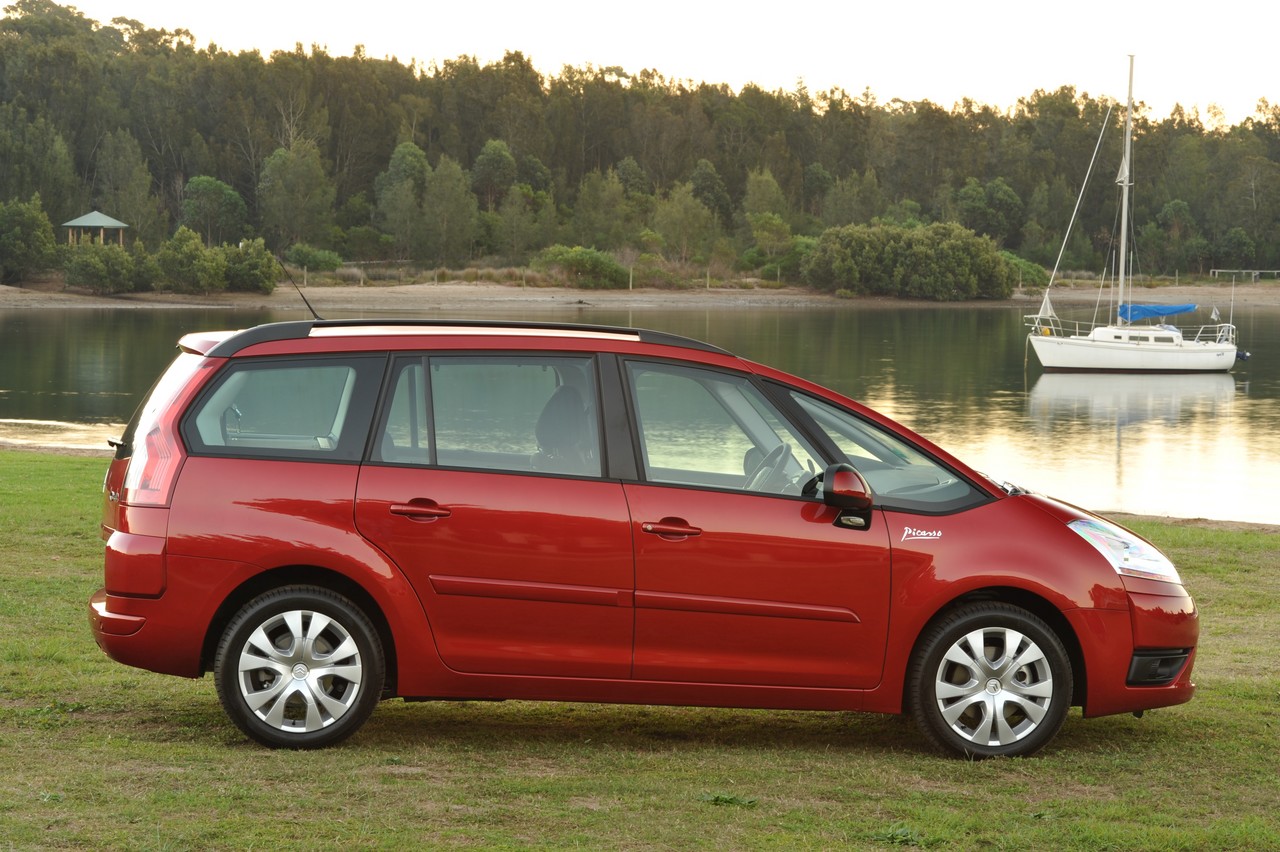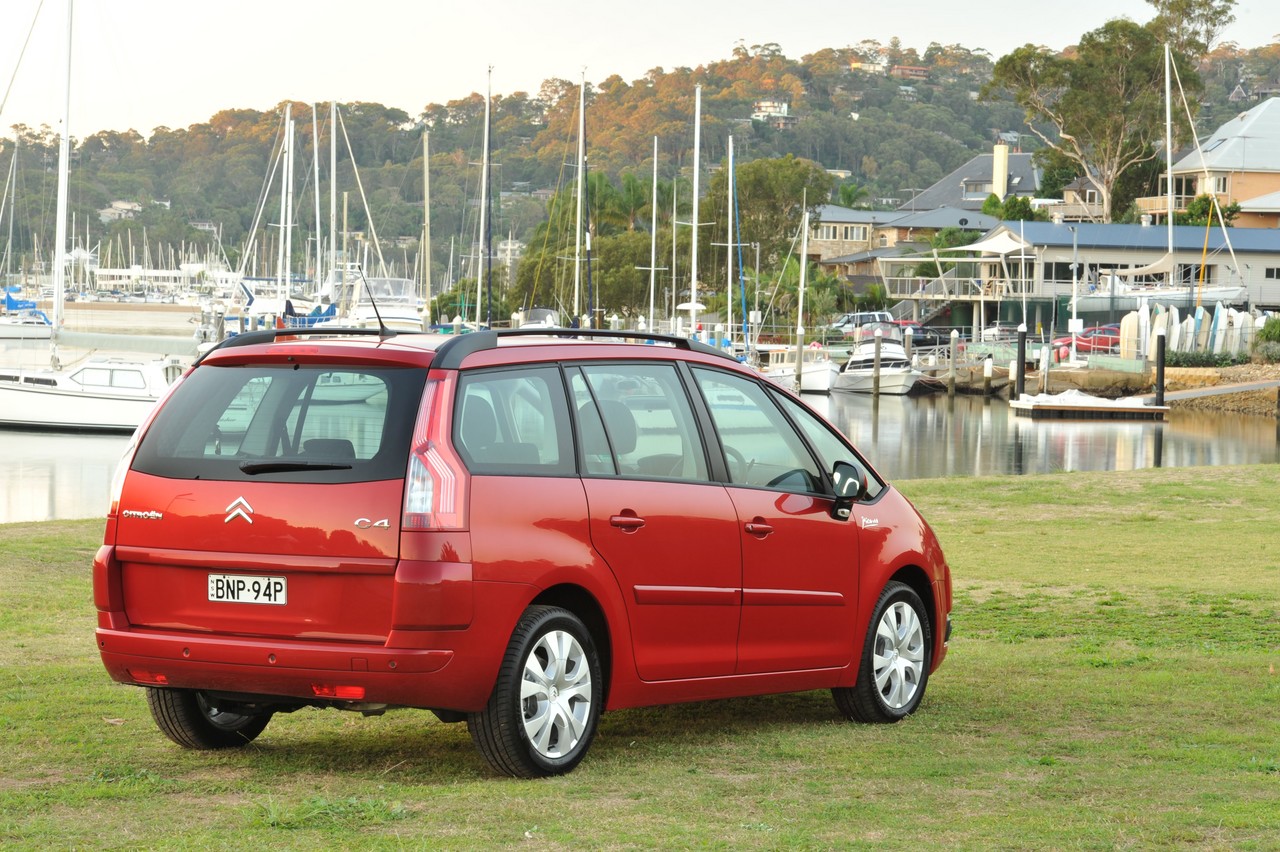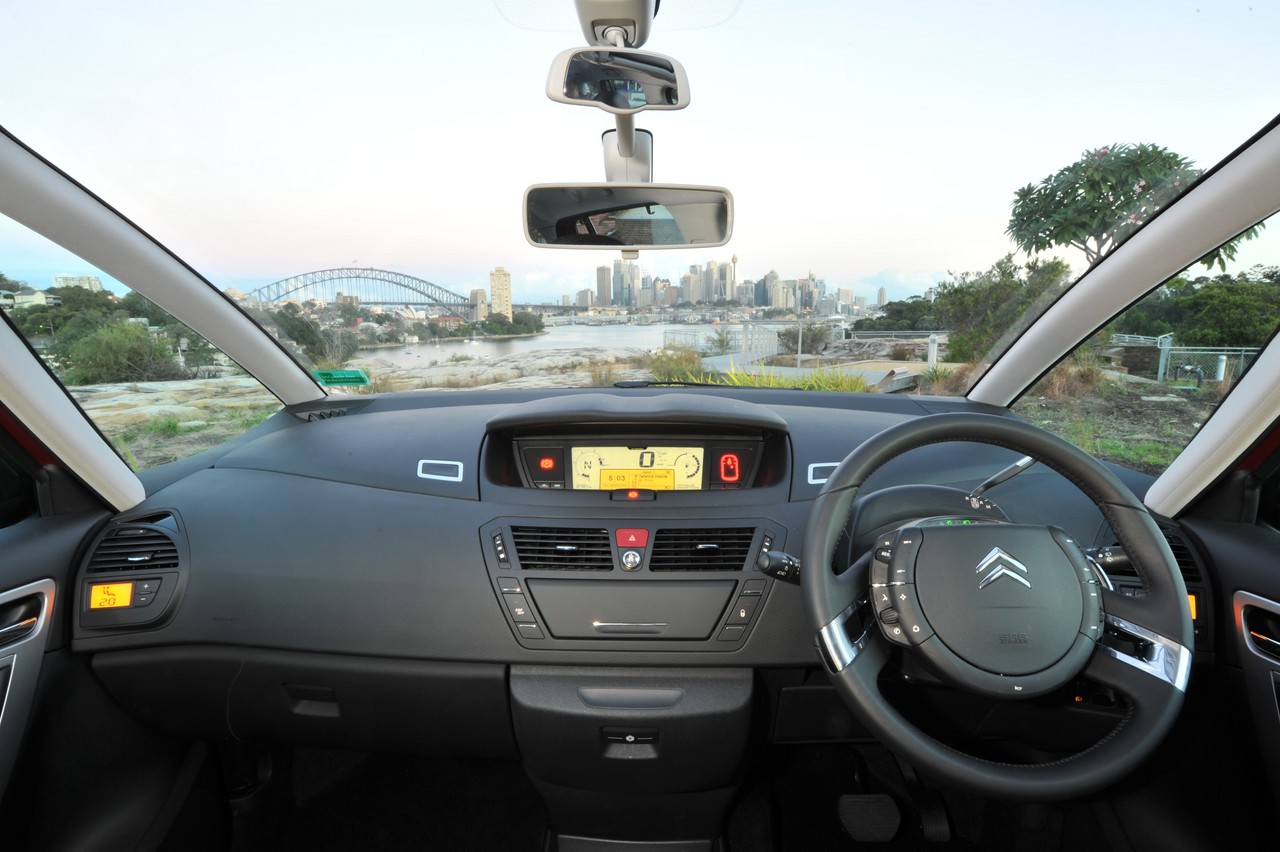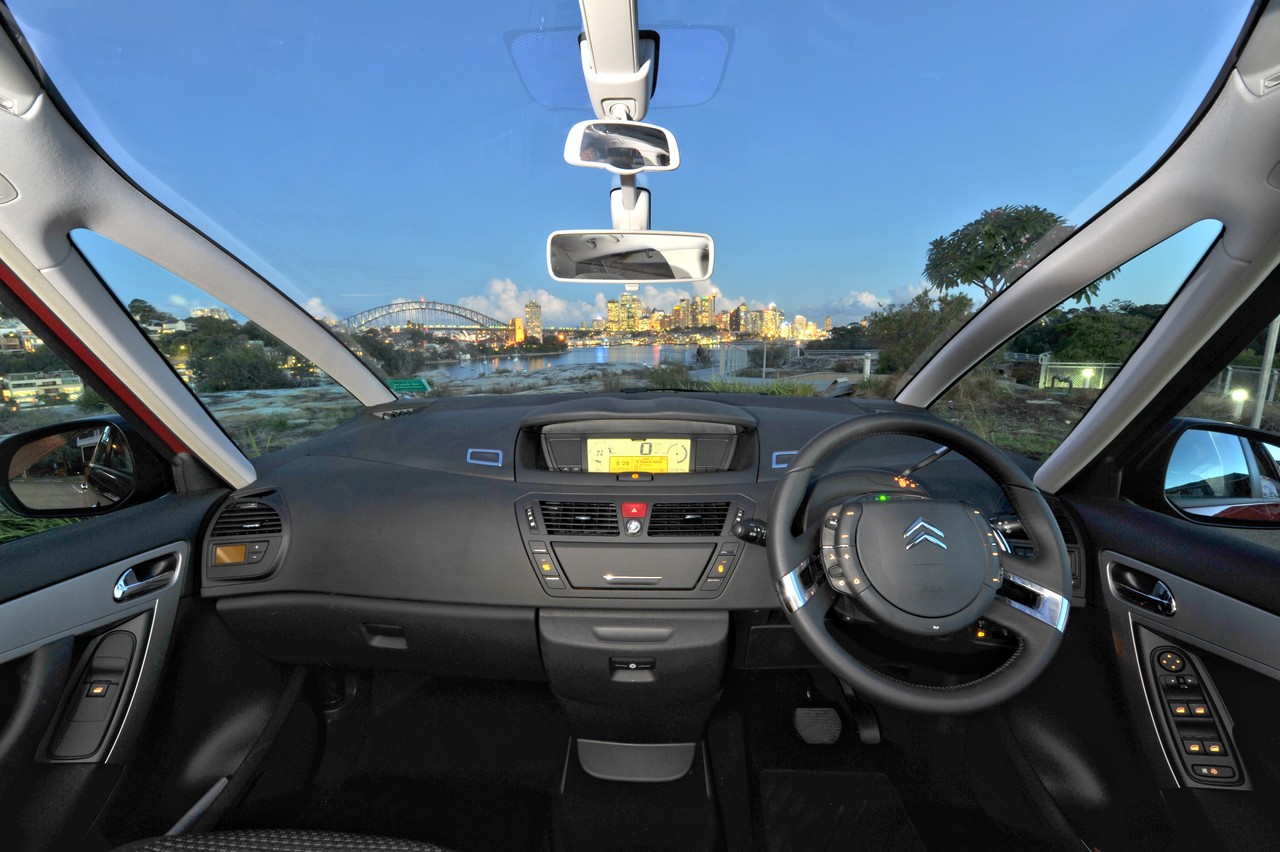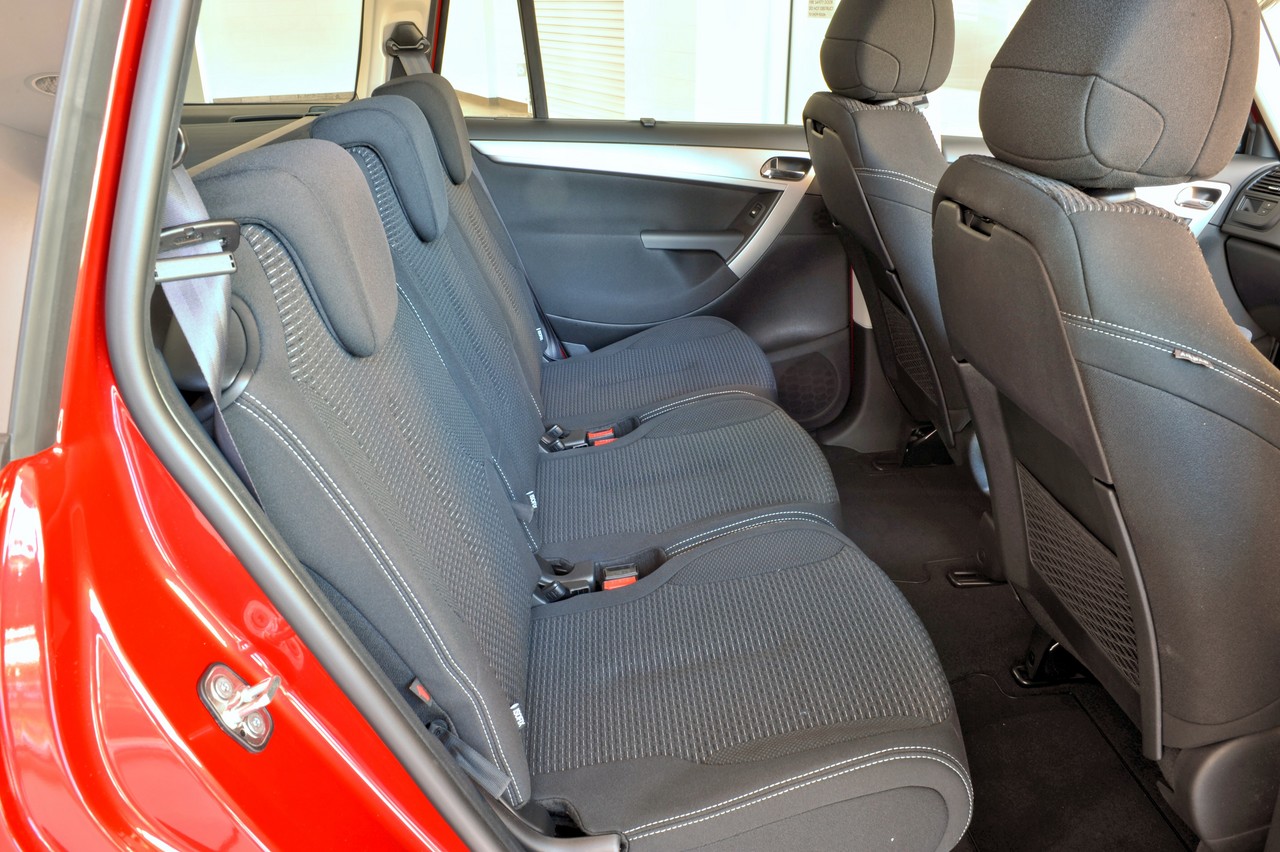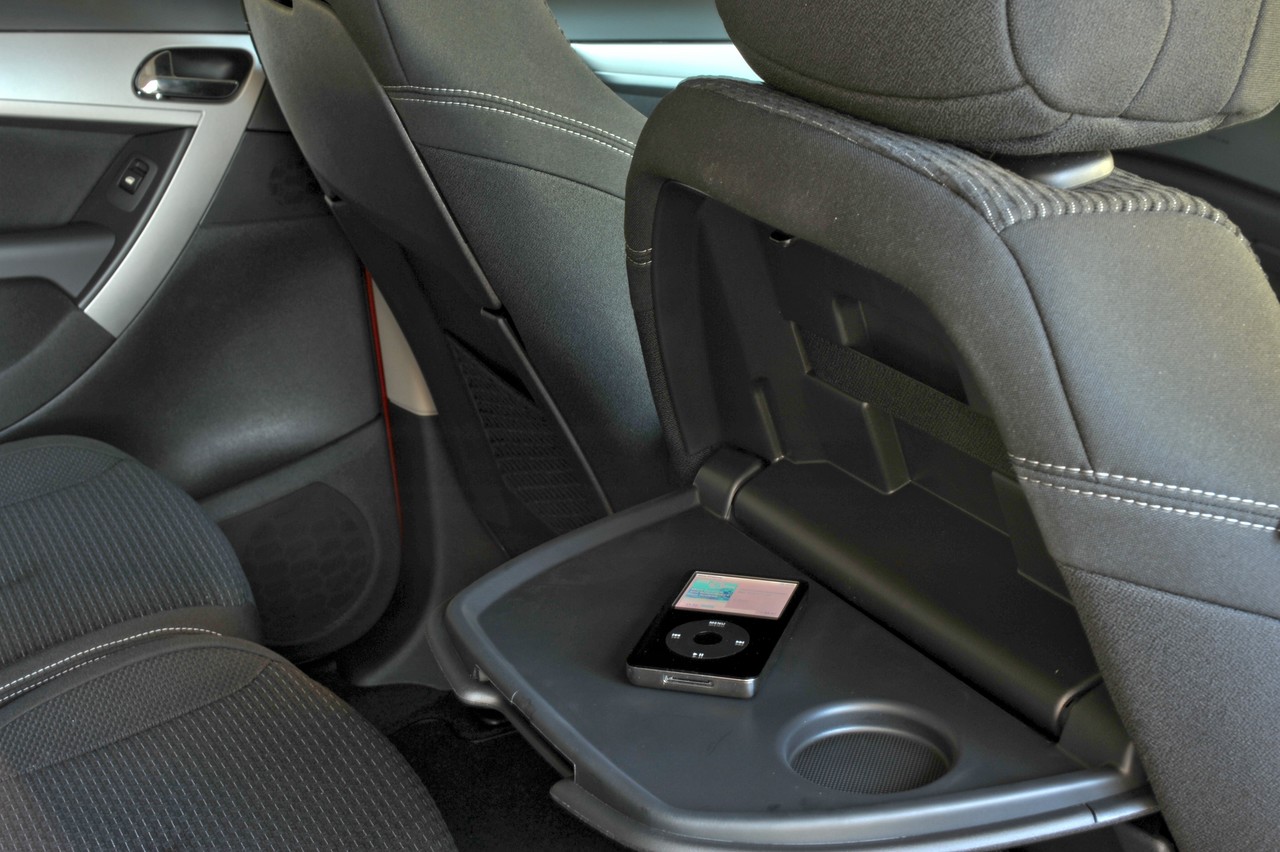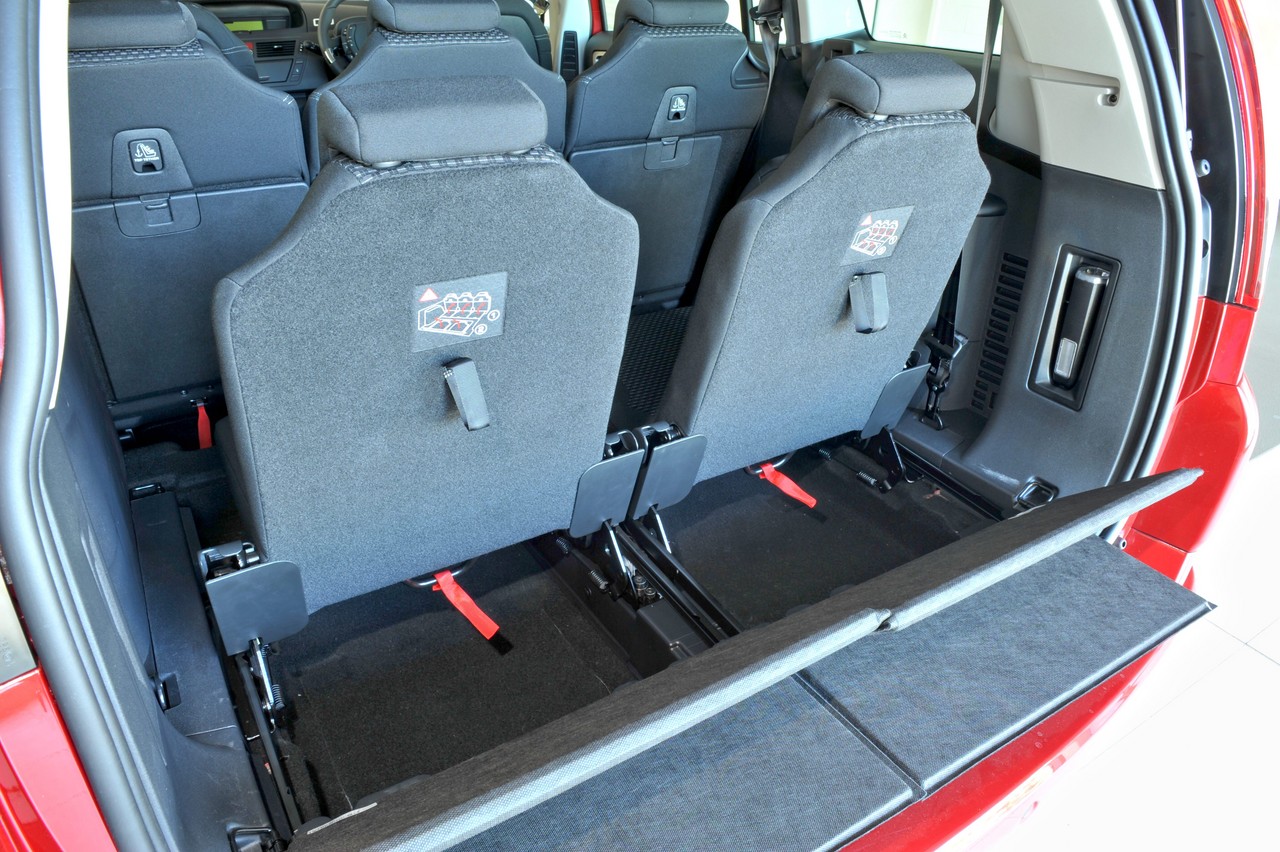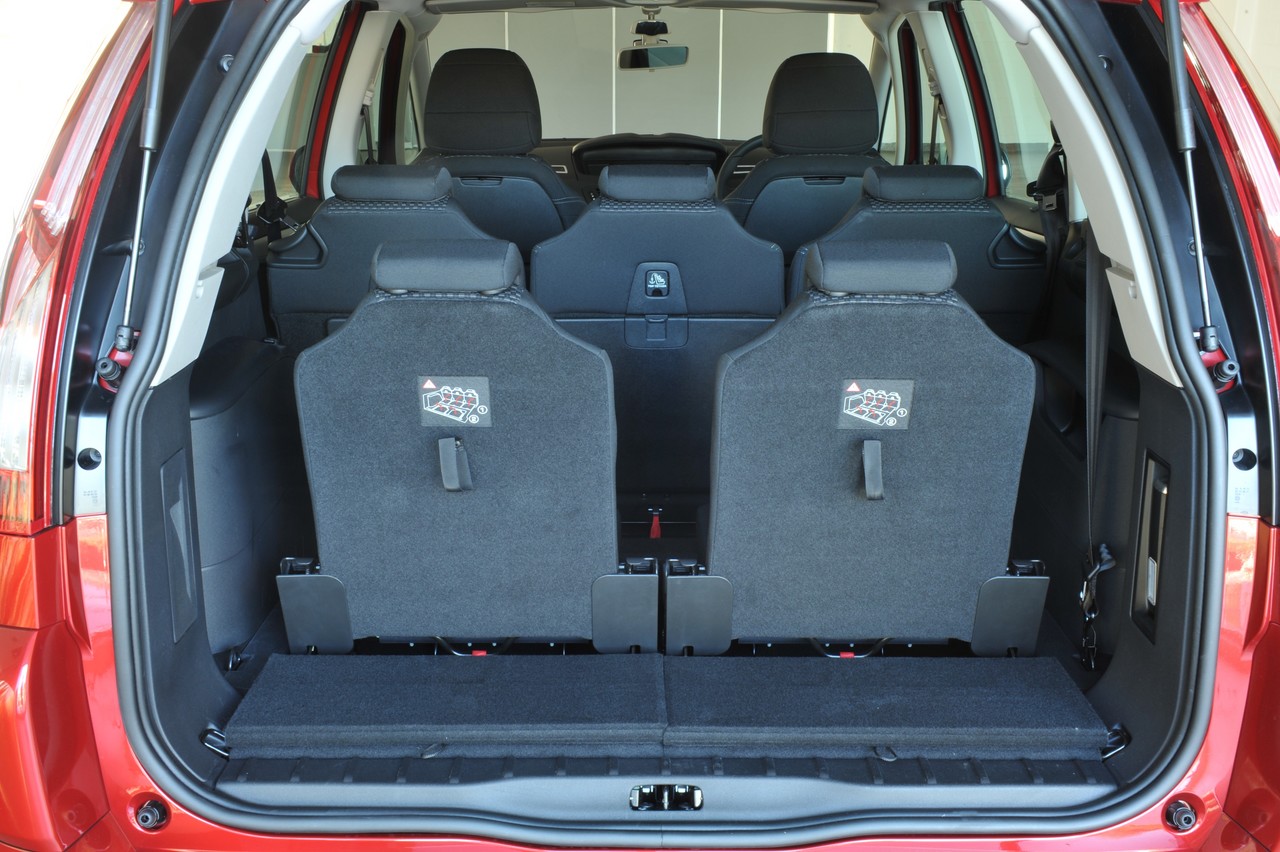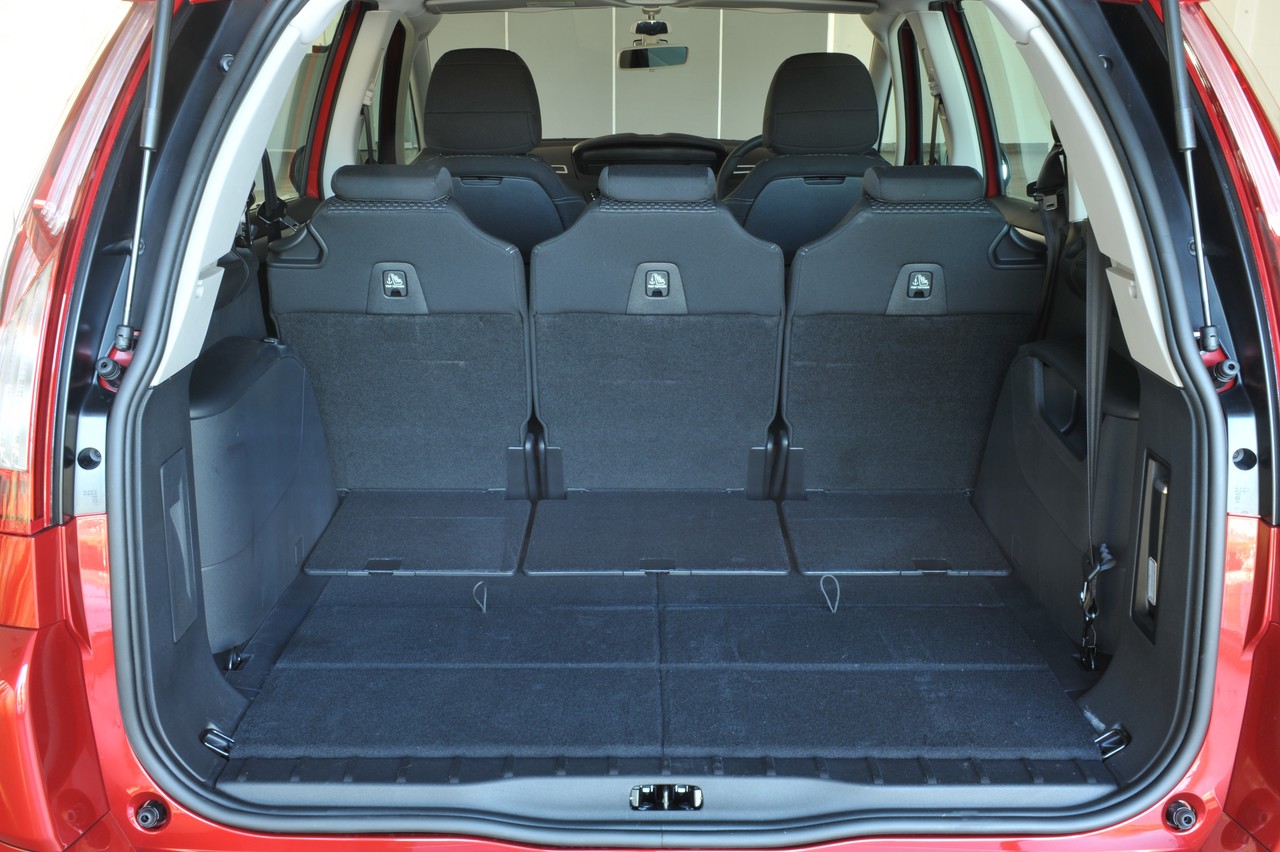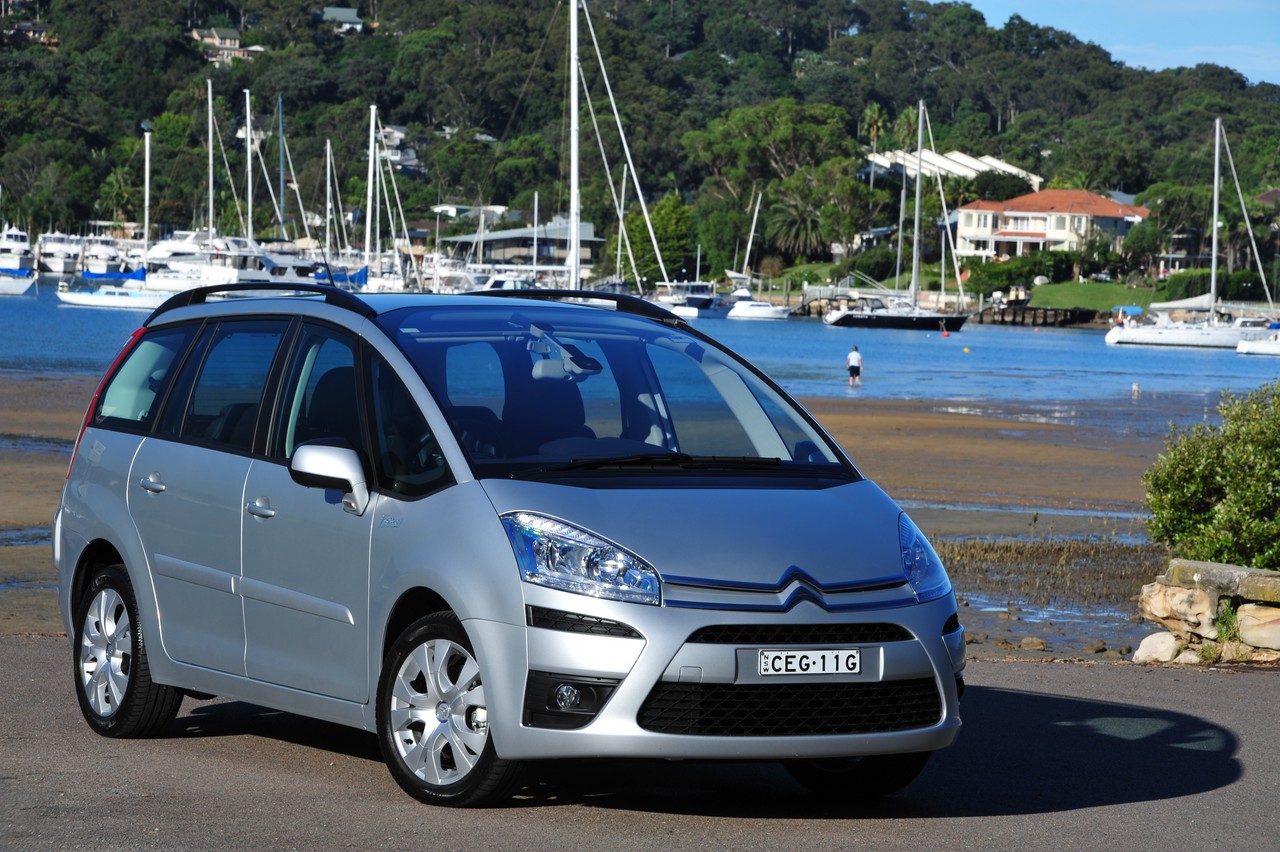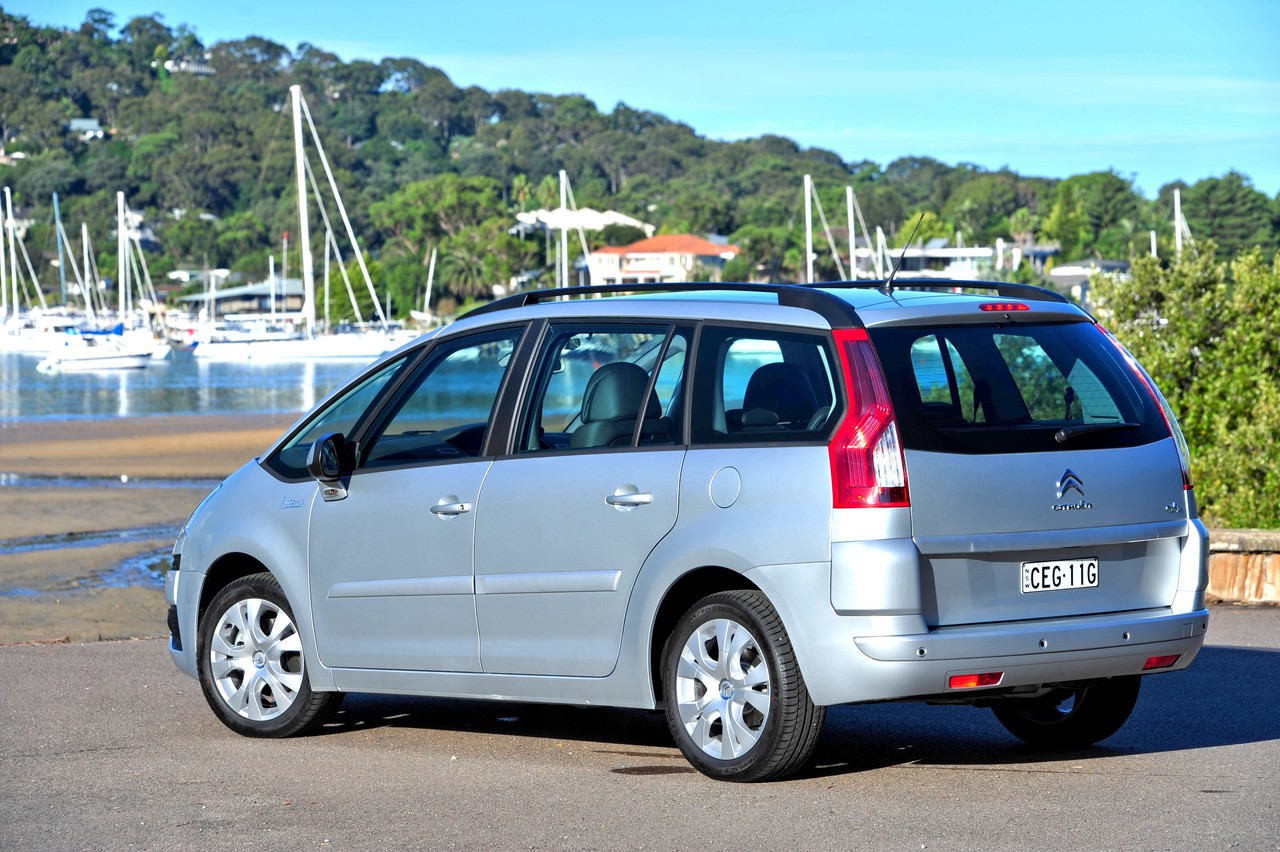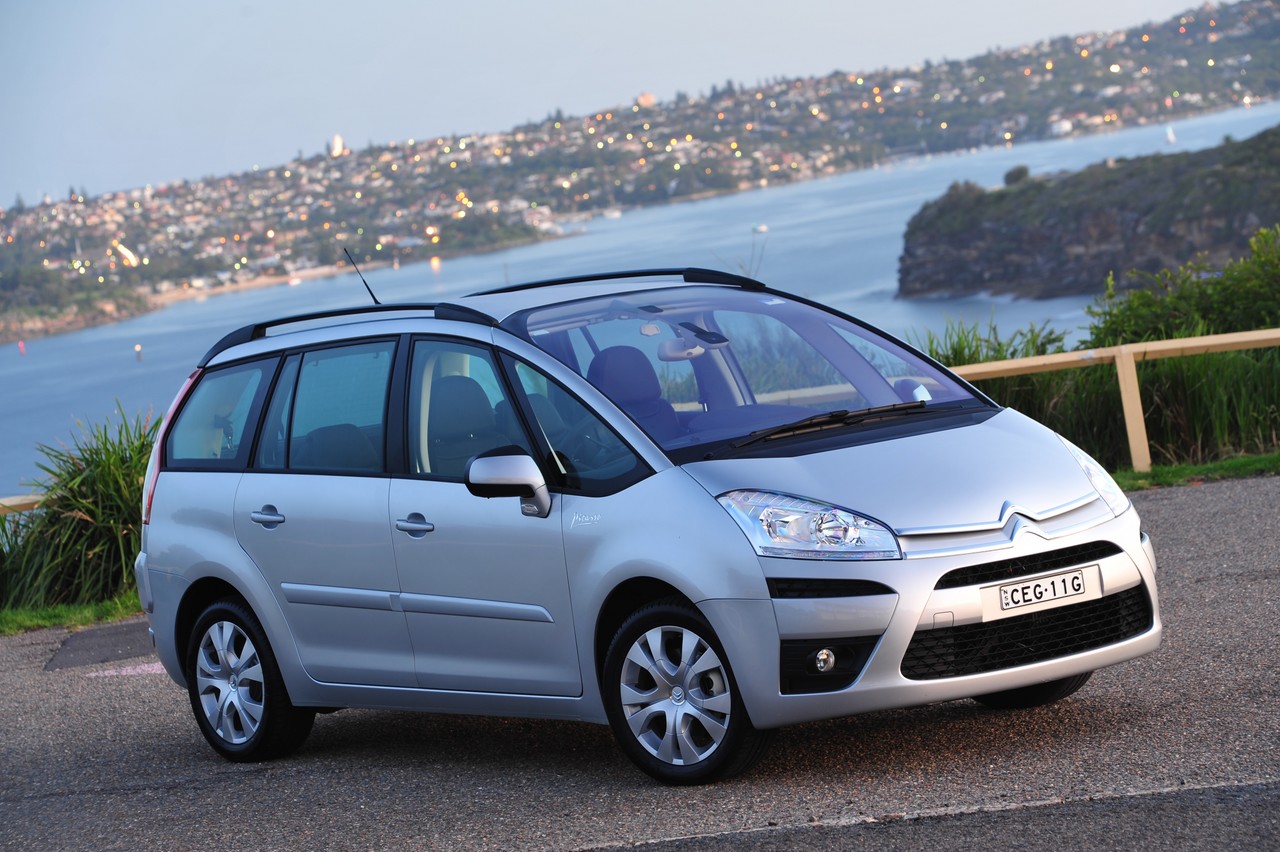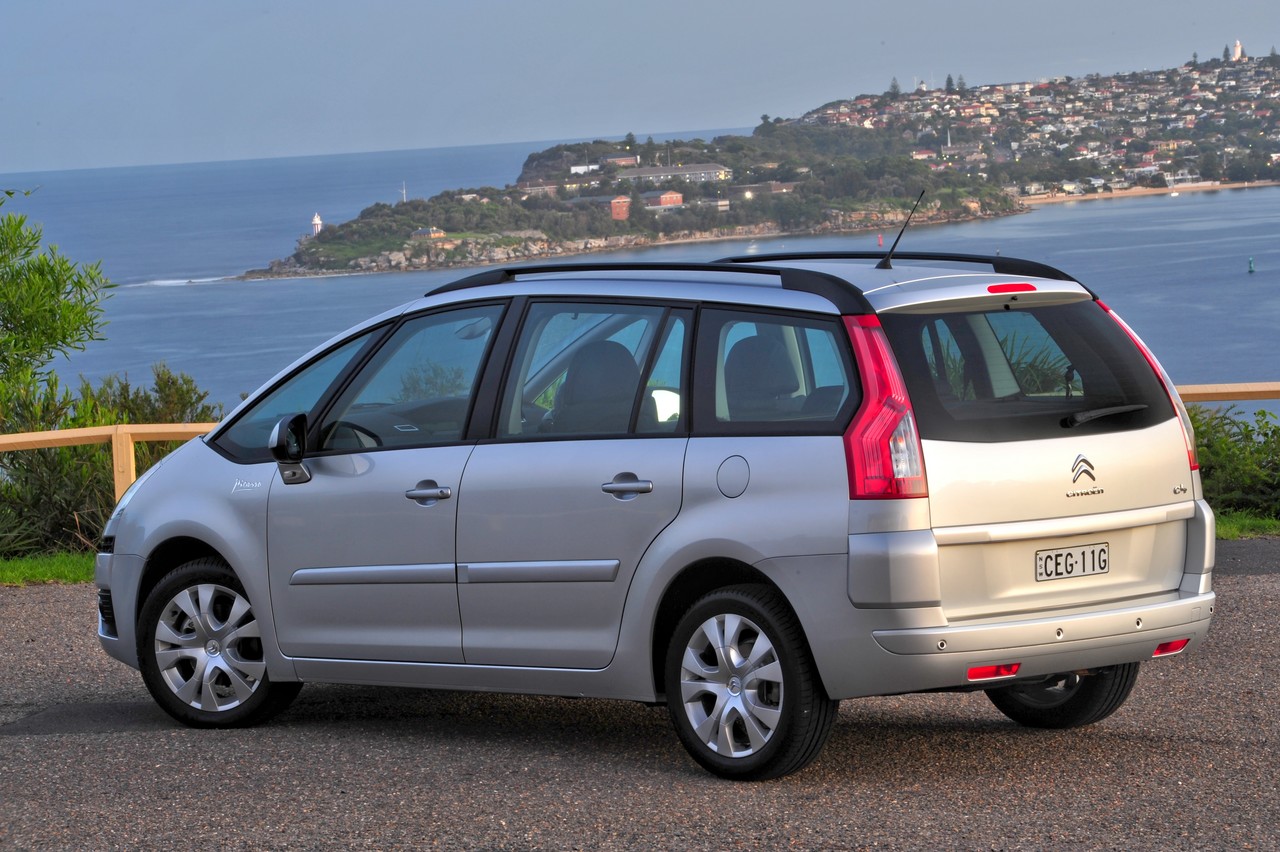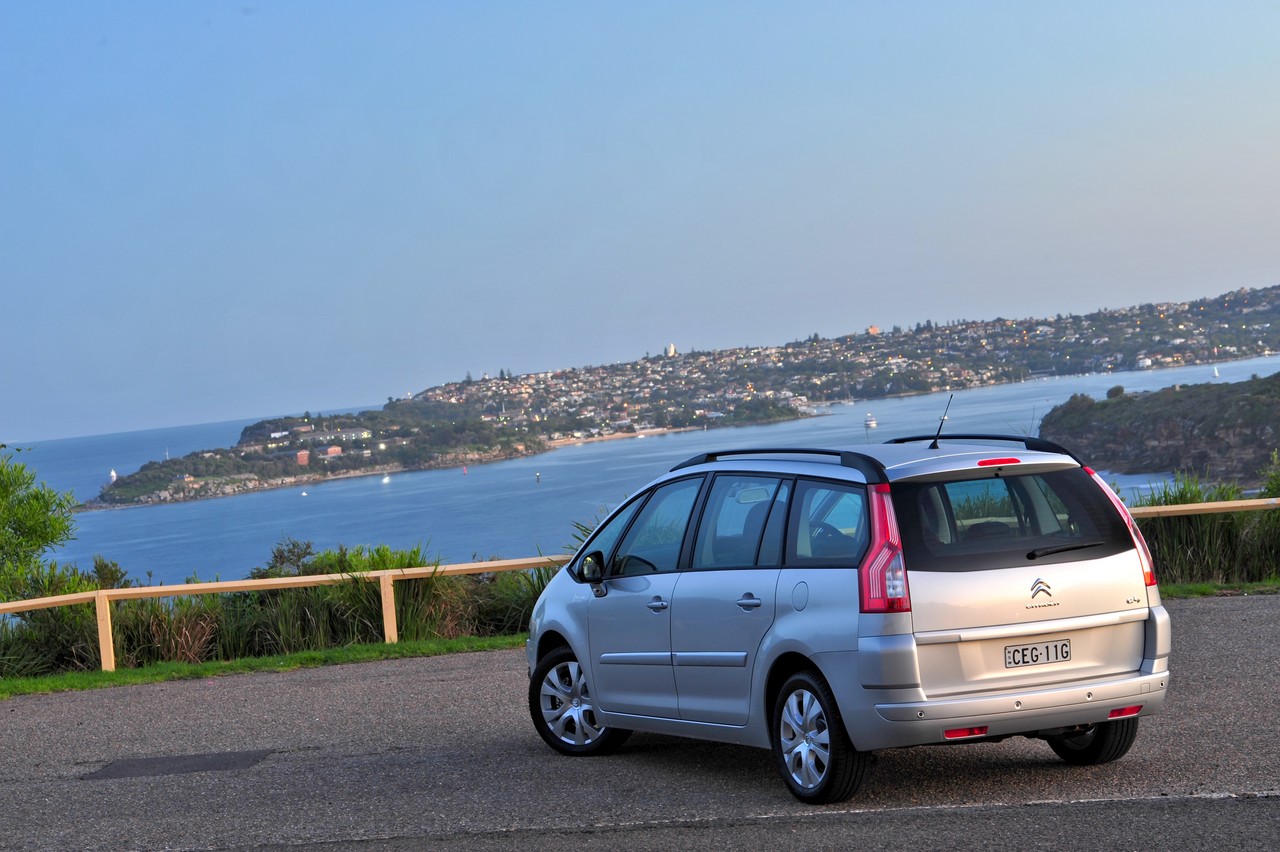
- Spacious and versatile interior
- Responsive turbo-diesel engine
- Excellent forward visibility
- Underpowered 2.0-litre petrol engine
- Semi-automatic transmission provides jerky gearshifts
- Underdamped suspension provides harsh, crashy ride
- Third row seats only for children
- Cheap interior plastics
Review: Citroën C4 Picasso (2007-13)
Review: Citroën Mk.I C4 Picasso (2007-10)
Overview
Released in May 2007, the Citroën Mk.I C4 Picasso was a seven seat people mover. Manufactured in Vigo, Spain, the front-wheel drive C4 Picasso was initially available with either a 2.0-litre four-cylinder petrol engine (‘2.0i’) or a 2.0-litre four-cylinder turbo-diesel engine (‘2.0 HDi’). Of these engines,
- The 2.0-litre EW10 petrol engine had double overhead camshafts, four valves per cylinder and a compression ratio of 10.8:1; and,
- The 2.0-litre DW10 diesel engine had a variable geometry turbocharger, common rail direct injection, double overhead camshafts, four valves per cylinder and a compression ratio of 17.6:1.
Based on an extended Citroën C4 platform , the C4 Picasso was 4590 mm long, 1830 mm wide, 1710 mm tall (including roof rails) and had a 2728 mm long wheelbase. Furthermore, the C4 Picasso had MacPherson strut front suspension and a torsion beam rear axle.
| Variant | Engine | Trans. | Peak power | Peak torque |
|---|---|---|---|---|
| 2.0i | 2.0-litre petrol I4 | 4sp auto | 103 kW at 6000 rpm | 200 Nm at 4000 rpm |
| 2.0 HDi | 2.0-litre turbo-diesel I4 | 6sp auto | 100 kW at 4000 rpm | 320 Nm at 2000 rpm |
Safety equipment
Standard safety equipment for the Citroën C4 Picasso consisted of dual front airbags, a driver’s knee airbag, front side airbags, full length curtain airbags (i.e. for all rows of occupants), ABS, electronic brake force distribution, brake assist, electronic stability control, traction control and front seatbelts with pretensioners and load limiters. The brake lights would also flash under heavy braking (hazard braking lights).
Brakes
The C4 Picasso had 302 mm by 26 mm ventilated front brake discs and 268 mm by 12 mm solid rear discs; both front and rear discs were fitted with floating calipers.
Euro NCAP crash testing
In Euro NCAP crash testing conducted in 2006, the C4 Picasso received a five star adult occupant protection rating with a score of 34.69 out of 37. In 2009, the C4 Picasso was re-tested by Euro NCAP under its updated testing regime following a request from Citroën. Unlike the models sold in Australia, however, the 2009 model tested by Euro NCAP was not fitted with a driver’s knee airbag – this C4 Picasso received a five star safety rating which included an 87 per cent adult occupant protection rating and a 78 per cent child occupant protection rating.
Features
Standard features included 17-inch alloy wheels, a six speaker sound system with CD player, four-zone climate control air conditioning, a cooled storage compartment, cruise control with speed limiter, rear parking sensors, automatic headlights, rain-sensing wipers, a multi-function steering wheel with gearshift paddles, remote central locking, power mirrors and windows, a height and reach adjustable steering wheel, height adjustable driver’s seat, rear door blinds, a power-operated park brake, roof rails, a cargo blind, trip computer and an immobiliser.
Inside, the C4 Picasso had a 2-3-2 seating configuration, with the second and third rows of seats capable of being folded into the floor.
C4 Picasso Premium Pack
In addition to the standard features, an optional Premium Pack added soft leather upholstery, chrome and piano black interior trim, powered front seats with heating and memory settings and ambient lighting.
C4 Picasso Exclusive
Available in 2007 and 2008 for the 2.0 HDi variant, the Exclusive editions added directional bi-xenon headlights with washers, ambient lighting and a cargo net.
C4 Picasso Safari
In November 2007, a limited-run Safari edition was released. Compared to the standard C4 Picasso, the Safari editions added satellite navigation (Mio C520 unit), Bluetooth mobile phone connectivity and front fog lights.
Related links
Review: Citroën Mk.II C4 Picasso (2010-12)
Overview
Released in May 2010, the Mk.II C4 Picasso introduced an updated 2.0-litre four-cylinder turbo-diesel engine and new transmission to provide significantly improved fuel consumption. The range was also revised with the 2.0i discontinued.
The 2.0-litre turbo-diesel engine featured a new-generation injection system and variable-geometry turbocharger. Furthermore, the engine was mated with Citroën’s semi-automatic Electronic Gearbox System (‘EGS’). The clutchless EGS featured automatic and manual modes, with the latter controlled via steering wheel gearshift paddles; there were also a ‘Sport’ and ‘hill start’ modes.
| Variant | Engine | Trans. | Peak power | Peak torque |
|---|---|---|---|---|
| 2.0 HDi | 2.0-litre turbo-diesel I4 | 6sp semi-auto | 100 kW at 4000 rpm | 270 Nm at 2000 rpm |
Safety equipment and features
Safety equipment and features for the Mk.II C4 Picasso were substantially unchanged.
Related links
Review: Citroën Mk.III C4 Picasso (2012-13)
Overview
Released in February 2012, the Mk.III C4 Picasso introduced an upgraded, Euro V emissions-compliant 2.0-litre turbo-diesel engine and cosmetic updates. Visually, the Mk.III C4 Picasso could be identified by its new front bumper, daytime LED running lights and revised grille.
| Variant | Years | Engine | Trans. | Peak power | Peak torque |
|---|---|---|---|---|---|
| 2.0 HDi | 2012-13 | 2.0-litre turbo-diesel I4 | 6sp semi-auto | 120 kW at 4000 rpm | 340 Nm at 2000 rpm |
Safety equipment
Compared to its Mk.II predecessor, standard safety equipment for the Mk.III C4 Picasso was extended to include a driver’s knee airbag.
Features
Standard features were also revised to include an auxiliary USB input, Bluetooth connectivity, dual-zone climate control (previously four-zone) and a cooled glovebox.
C4 Picasso Vision editions
In November 2012, Vision editions of the C4 Picasso were released. Compared with their standard counterparts, the C4 Picasso Vision editions were further equipped with integrated satellite navigation, full-length glass sunroof, power folding rear view mirrors and a separately opening rear tailgate window.
Related links
- Press Kit: Citroen Mk.III C4 Picasso (February 2012)
- Wikipedia.org: Citroën C4 Picasso (first generation)
